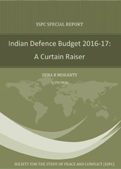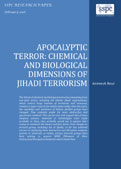"Kashmir Jihadism and Threat to India" Terrorism Monitor
It is increasingly evident that each time the relations between India and Pakistan improve, India-focused jihadist groups from across the Pakistani border attempt to disrupt it with attacks in the Indian states of Kashmir, Punjab, and elsewhere. The inevitable aim of these is to upset the possibility of amicable dialogue between these two populous and nuclear-armed nations.




